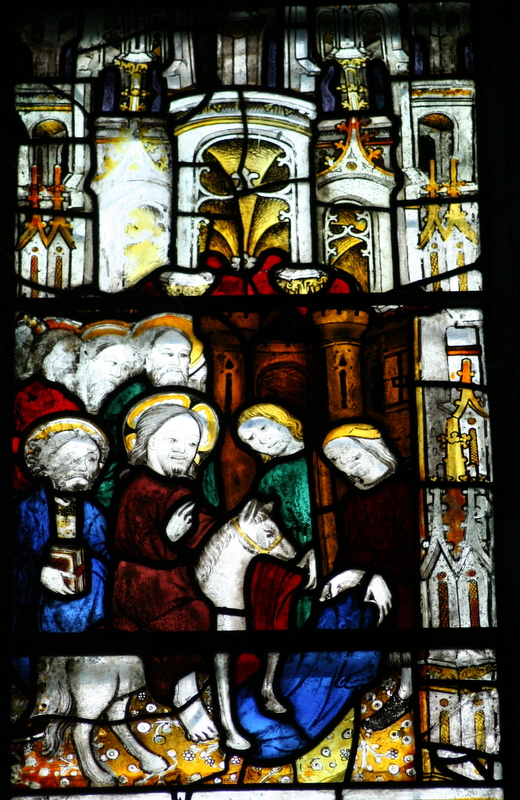The Drama of Stained Glass: An Examination of the Fifteenth-Century Passion Window at St Kew
Tuesday 16 April 2024, 5.00PM to 7.00pm
Speaker(s): Dr Lydia Fisher (University of Exeter)
Image: Christ's Entry into Jerusalem, c.1490, St Kew, Cornwall.
The north chapel of the parish church at St Kew houses one of the best surviving pre-
Reformation stained-glass programmes in Cornwall. The east window is divided into four
main lights with ten panels sequentially depicting individual episodes from Holy Week.
Through its ornate design and vivid impression of these events, the window conveys a
dramatic and theatrical retelling of Christ’s final days, highly reminiscent of the religious
plays that were often enacted in the later Middle Ages. There is copious evidence for the
staging of biblical and secular plays across the South-West of England in this era, disclosing
the creative south-western context for religious drama within which the window at St Kew
operated. For instance, parish records refer to plays taking place at Bodmin, St Ive’s and
Stratton in Cornwall, as well as at Ashburton, Dartmouth and Morebath in Devon. They may
have held widespread appeal as in 1602 Richard Carew described one Cornish miracle play
where, ‘the country people flock from all sides, many miles off, to hear and see it’. 1
This paper examines the dramatic qualities of St Kew’s Passion window which evoke both
the narrative and spectacle of religious plays. In doing so, it focusses particularly on the
shared motifs exhibited by the window in relation to the anonymous, fourteenth-century
Cornish Ordinalia play cycle. Here, both art forms actively construct a localised,
anachronistic environment around the historical events they portray, encouraging the
observer to experience Christ’s sacrifice in real time and space. A comparison of the details
included in numerous scenes also demonstrates how the stained glass and Ordinalia parallel
each other’s interpretation of the story. Overall, this paper argues that St Kew provides
important evidence for a complex, interactive dialogue between different artistic media that
merits further exploration.
1 Thomas Tonkin (ed.), Carew’s Survey of Cornwall (London, 1811), 192
Location: Kings Manor KG/33

